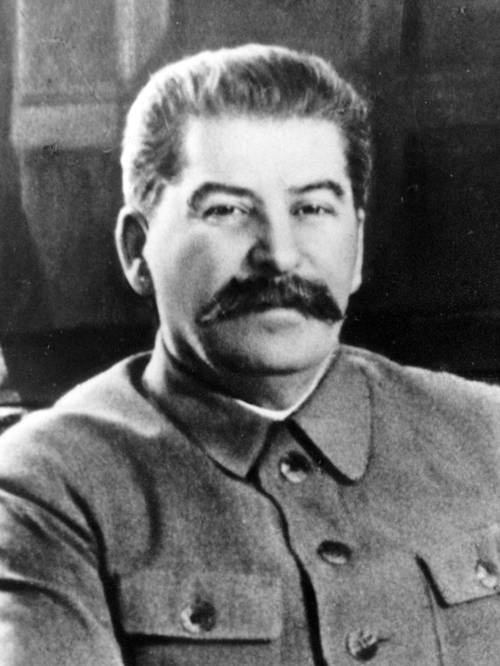
FAQ About Joseph Stalin

Who was Joseph Stalin?
Joseph Stalin was a Soviet political leader who became the General Secretary of the Communist Party of the Soviet Union, effectively ruling the country from 1924 until his death in 1953. Known for his totalitarian regime, he implemented significant industrialization and collectivization policies and led the Soviet Union during World War II.

What were Joseph Stalin's key policies?
Joseph Stalin's key policies included the Five-Year Plans aimed at rapid industrialization, the collectivization of agriculture to consolidate individual landholdings into large, state-controlled farms, and political purges to eliminate opposition within the Communist Party and the country. These policies greatly transformed the Soviet economy but also led to severe social and human costs.

How did Joseph Stalin rise to power?
Stalin rose to power through a combination of political savvy, strategic alliances, and administrative skills. After the death of Vladimir Lenin in 1924, Stalin outmaneuvered his rivals, including Leon Trotsky, to consolidate his control over the Communist Party. He utilized his position as General Secretary to appoint supporters to key positions and gradually established a centralized authoritarian regime.

What was the Great Purge under Stalin?
The Great Purge, also known as the Great Terror, was a campaign of political repression and persecution orchestrated by Stalin from 1936 to 1938. It involved widespread arrests, executions, and imprisonment of perceived enemies of the state, including Communist Party members, military leaders, and ordinary citizens. The purge severely weakened the Soviet military and society but solidified Stalin's absolute control.

What role did Stalin play in World War II?
Joseph Stalin played a crucial role in World War II as the leader of the Soviet Union. After initially signing the non-aggression Molotov-Ribbentrop Pact with Nazi Germany, he was caught off guard by the German invasion in 1941. Stalin led the Soviet Union through significant battles such as Stalingrad and forged alliances with the United States and the United Kingdom, ultimately contributing to the defeat of Nazi Germany in 1945.

How did Stalin's policies impact agriculture in the Soviet Union?
Stalin's agricultural policy, known as collectivization, aimed to consolidate individual farms into large, state-run collectivized farms. This policy was supposed to increase agricultural productivity but resulted in widespread disruption, resistance from peasants, and severe famines, particularly the catastrophic famine in Ukraine known as the Holodomor, leading to millions of deaths.

What was the Molotov-Ribbentrop Pact?
The Molotov-Ribbentrop Pact was a non-aggression treaty signed between the Soviet Union and Nazi Germany on August 23, 1939. Named after the foreign ministers of the respective countries, Vyacheslav Molotov and Joachim von Ribbentrop, the pact included secret protocols dividing Eastern Europe into spheres of influence. This pact allowed both powers to avoid conflict while expanding their territories.

How did Stalin transform the Soviet Union's economy?
Stalin transformed the Soviet Union's economy through a series of ambitious Five-Year Plans, which aimed at rapid industrialization. These plans focused on heavy industry, production of steel, coal, and military goods, drastically increasing industrial output. However, this economic transformation often came at the cost of consumer goods scarcity, forced labor, and harsh living conditions for many Soviet citizens.

What were the human costs of Stalin's rule?
The human costs of Stalin's rule were immense, including the execution and imprisonment of millions during political purges, the widespread famine resulting from forced collectivization, and the oppressive nature of a totalitarian regime suppressing political dissent. The purges decimated intellectuals, military leaders, and perceived political opponents, leaving a lasting scar on Soviet society.

What was the significance of the Battle of Stalingrad during Stalin's rule?
The Battle of Stalingrad was a pivotal conflict in World War II that marked a turning point in favor of the Allies. Fought between August 1942 and February 1943, the battle was one of the bloodiest in history, with massive casualties on both sides. It ended with the defeat of Nazi Germany's Sixth Army, bolstering Soviet morale and marking the beginning of the German retreat on the Eastern Front.

How did Stalin's death influence Soviet politics?
Stalin's death in 1953 led to a power struggle within the Communist Party and a subsequent thaw in Soviet politics known as de-Stalinization. Under Nikita Khrushchev, efforts were made to reduce the oppressive controls of the Stalin era, releasing political prisoners, and denouncing the purges. This period resulted in significant socio-political changes and a relaxation of the totalitarian regime.

What legacy did Joseph Stalin leave behind?
Joseph Stalin's legacy is complex and contentious. He is credited with turning the Soviet Union into a superpower and playing a decisive role in the Allied victory of World War II. However, his legacy is marred by brutal repression, purges, and policies that caused widespread suffering. Stalin's rule is often associated with the negative aspects of authoritarianism and is subject to reevaluation and debate in historical discourse.

How did Stalin impact global politics during his leadership?
Stalin had a profound impact on global politics through his leadership of the Soviet Union, turning it into a major world power. His policies and strategies during World War II helped shape the post-war global order, particularly in Eastern Europe. The establishment of communist states in Eastern Bloc countries and his involvement in the Cold War defined much of the mid-20th-century geopolitical landscape.

What are Stalin's Five-Year Plans?
The Five-Year Plans were a series of nationalized plans for economic development in the Soviet Union implemented by Stalin. Initiated in 1928, these plans aimed at rapid industrialization and the collectivization of agriculture. While they significantly increased industrial output and military production, they were characterized by harsh labor conditions and contributed to severe social and human costs.

Why is Stalin's rule often described as a 'cult of personality'?
Stalin's rule is often described as a 'cult of personality' because he established an image of himself as an infallible leader and a guardian of communism. The Soviet state controlled propaganda extensively promoted this image through media, education, and public art. Stalin's likeness was omnipresent, and dissent was harshly suppressed, solidifying his absolute authority and fostering a perception of eternal leadership.

How did Joseph Stalin's policies affect minority groups in the Soviet Union?
Joseph Stalin's policies negatively affected minority groups in the Soviet Union, as he pursued forced deportations and assimilation policies. Ethnic groups perceived as disloyal were subjected to mass deportations to remote regions, and their cultural institutions were often suppressed. These actions fueled ethnic tensions and had lasting effects on the demographics and social fabric of the Soviet Union.

What was the Soviet famine of 1932-33 and how was Stalin involved?
The Soviet famine of 1932-33, often referred to as the Holodomor in Ukraine, was a devastating famine caused by the forced collectivization policies of Stalin's regime. Grain requisition quotas were enforced harshly, leading to widespread hunger and death across rural Soviet areas, particularly in Ukraine. Stalin's policies and refusal to alleviate the suffering are considered a significant contributing factor to the catastrophe.

What was Operation Barbarossa and how did it affect Stalin's leadership?
Operation Barbarossa was the code name for the Nazi Germany invasion of the Soviet Union launched on June 22, 1941. Initially, the operation caught Stalin and the Soviet Union by surprise, leading to significant territorial losses. However, it galvanized Soviet resistance and eventually led to a counter-offensive. Stalin's leadership during this period was critical in mobilizing Soviet resources for the war effort and ultimately repelling the invaders.

How did Stalin's governance style affect the Soviet military?
Stalin's governance style had a profound effect on the Soviet military. His purges of the military leadership in the late 1930s significantly weakened the armed forces by removing experienced commanders based on political loyalty rather than military competence. During World War II, however, the military was rapidly restructured and expanded, ultimately playing a crucial role in defeating Nazi Germany.

What were the political purges under Stalin?
The political purges under Stalin, part of the broader Great Purge, were systematic campaigns to eliminate dissent within the Communist Party and broader Soviet society. These purges involved arresting, exiling, or executing perceived political adversaries, including high-ranking party officials, military leaders, and ordinary citizens. The purges instilled fear, consolidated Stalin's power, and dramatically reshaped Soviet political life.
